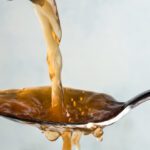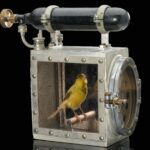
Weighing risk of disease
This article was motivated by interactions with my local bird rescue. Using three examples, I attempt to illustrate the importance of weighing the risk of disease with the likliehood of it happening. The goal would be maximizing the happiness of as many birds as possible, perhaps finding ways to mitigate risk rather than just refusing to take it on, losing benefits to birds in need.
If fostering and adopting birds feels like walking through a minefield, people will be less likely to become involved. We need to present people with risks that that have some probability of actually happening. Think of all the possible ways a child could get injured. Do we want to make sure a child is never exposed to any situation where they might become injured? What kind of life is that?
Newcastle disease
In 2019, Virulent Newcastle Disease made a comeback. In Northern California, a single case was reported on March 15 in a backyard chicken. Mickaboo Companion Bird Rescue put this text in red at the top of their website.
Until we know whether this was a single isolated case or possible indication of a more widespread problem, Mickaboo will be unable to accept any new birds into our care. Please monitor our website for new or updated information. The safety of our birds, and of all birds, is our primary concern at this time.
Mickaboo—Archive.org
As an initial reaction, perhaps it wasn’t such a bad idea, but after 4 months this warning text remained. They’re turning away hundreds of birds that need homes. A prudent strategy of testing and quarantine until results are receieved would be a reasonable response in my opinion. Also, some fosters and adoptees may either be willing to face the risks or have no other birds in their homes or aviaries.
There’s no denying that this is a terrible disease. Theoretically, it could wipe out a whole bunch of birds. But if you’re in the business of rescuing birds, you have to weigh your response to the disease against the animals that will suffer because you are not rescuing birds anymore.
West Nile Virus
I have an outdoor aviary and I’ve been chastised for exposing my birds to to risk of West Nile Virus. I recently discovered an article on The Parrot Steward Blog about this very subject.
Companion Parrots, Outdoor Aviaries, and West Nile Virus
Before reading this article I already had researched the virus and noted that it had not been found in my county in recent years. I also use some mitigation techniques because I feel that minimizing their exposure to mosquitos is just good husbandry.
However, people often see the world in black and white. I think I’ve assessed the risk of this virus to my birds and determined that the benefits to their well-being greatly outweighs the risk. If the risk profile were to change, perhaps I’d re-evaluate that.
Risk management is always a subjective and personal endeavor. Each of us must determine at which point along the spectrum we are comfortable when it comes to weighing the risks of West Nile Virus against the benefits of getting our birds outdoors.
Companion Parrots, Outdoor Aviaries, and West Nile Virus
Psitticine Beak and Feather Disease
Sometimes birds show up in the local bird rescue that are suspected of having Psitticine Beak and Feather Disease (PBFD). Typically they are quarantined pending test results. This is a terrible disease for which this is no cure and no good preventative.
When a bird in this situtation showed up with PBFD, this was how the “opportunity” was sold.
We have two birds who possibly have PBFD (a deadly highly contagious disease) they are being tested and at the vets now. We need a foster who can take this bird. What this entails is not having other healthy birds in the home now and not being able to bring a healthy bird bird into your home ever.
Mickaboo Adoption Coordinator
As with other diseases mentioned his, this is a truly terrible disease. There is no cure and no reliable vaccine. However, the risk is exaggerated in some ways and the truth might help a potential foster make an informed decision.
PBFD is usually acquired by nestlings from their parents (vertical transmission) or from other members of the flock (horizontal transmission). The immature immune system of young birds makes them susceptible to the PBFDV. The virus may be transferred in crop secretions, in fresh or dried feces, and in feather and skin particles.
Psittacine beak and feather disease—Wikipedia
Note that while it’s contagious, it’s believed to affect primarily birds with weak or undeveloped immune systems.
The claim about not being able to have a bird in your house ever again comes from this finding.
Virus infectivity probably persists in contaminated nests for many months or even years.
Incidence and detection of beak and feather disease virus in psittacine birds in the UAE—Biomolecular Detection and Quantification—Nov 11, 2015
There is no evidence that in a normally cleaned household, with normal light and airflow, this virus (or any virus) can live for years. There is nothing special about this virus that allowed it to survive for years in a nest hollow. Turns out a moist, dark nest hollow filled with discarded feathers (which the virus consumes) is one heck of a place to live for a long time.
Here are some important things about this virus:
- Even though healthy adults rarely get this disease, they will carry the virus and shed it, potentially exposing juveniles or those with weak immune systems
- As with any virus carried by feces, feathers, and skin, it’s not possible to completely eliminate risk in a quarantine unless you separate birds into rooms with separate air systems (or outside).
- There is no cure or vaccine.
The take away here is that there is nothing particularly special about this virus other than it can be carried by adults indefinitely. You could have what appears to have been a successful quarantine, but years later, a healthy adult could affect a juvenile or immune-comprompromised adult.
So, this is indeed a very special case that requires great care. The best option may be a home with no birds currently or for which an effective quarantine can be set up. Once an infected bird is gone, standard disinfection practices should eliminate the virus.
For a serious disease for which there is a cure, a low risk of getting a disease may be worth taking. But the incurabilitiy does make the risk a greater one.
Conclusion
My main point here is that it’s important to understand the risk of introducing a bird that may have a disease. That risk must be based in science and not emotion although emotion certainly plays a part in deciding whether to risk bringing a sick bird into your home.
Too often we err on the side of caution and birds that need our help don’t get it. With proven precautions, risk can be lowered significantly and we can give assistance to another bird that needs our help.




